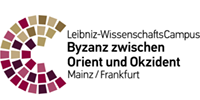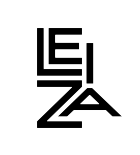Processes of negotiation in stone: Building activity as a reflection of social relations in Middle Byzantine Constantinople (6th-10th cent.)
Building is a form of utterance of power, as one has to marshal the resources and builders necessary, and the completed building is a statement of credibility and fulfilled ambitions of its patron.
In Constantinople, imperial and elite agency met in the field of building activity. For this project, Constantinople is much more than a city for a case study. In fact, the city itself as the centre of the empire, gave rise to a distinctive building culture. In the period I am about to study, Constantinople was the most populous city on the continent, a true metropolis comparable with any modern environment in size and complexity. Constantinople followed no cohesive plot of development in its history, as there was no unitary trajectory, yet it was the unchallenged capital across the four centuries and was, as the focal point of power in a centralised empire, the place of negotiation for the elites.
During the eventful centuries from the sixth to the tenth, Constantinople was thoroughly transformed in all its aspects, from its inner topography and visual outlook, from its social and cultural fabric to its identity. My first aim is to understand how members of the power and status elites made use of Constantinople with its spaces and traditions for their political agendas. These elite groups, and the emperors above and as a part of them, redefined, shaped and appropriated urban spaces. My second mission is to examine the building policy and building culture of the elites as a reflection of their exercise of power. My premise is that the organisation and the shaping of urban spaces in Constantinople can be explored through the prism of political relations.
In being involved in the construction and embellishment of buildings across the city, the members of the elites followed the example of the emperors and their kin. To date, however, there is no study on the building activity initiated by the Byzantine emperors and the imperial apparatus as such, on the various levels including the role of the patron, construction financier, building contractor or legislator in the building sector. It is, however, evident that the emperors treated the image of Constantinople as a tool for conveying power and legitimizing their might, as building was considered a classical imperial virtue.
I assume that the building activities of the elites, most often associated with the imperial administration, exerted a great impact on the various parts of the city, and entailed negotiations between the elite and the emperor. These process of negotiation took place, and can be localised in the various neighbourhoods and suburbs of Constantinople. It is apparent that some building initiatives seem to have more vigorously targeted the people living in a given neighbourhood. Questions of spatial hierarchies and nodes are therefore tackled by an investigation and reconstruction of the evolving topography of imperial and elite patronage, based on Byzantine texts and material remains.
My work is of course grounded in the spatial turn, so I investigate agency over and through space, but I also examine the social embeddedness of the act of building and its processional character. This project closes a gap in scholarship between the fields of architecture, liturgical and topographical studies by studying processes of negotiation between imperial and elite agencies in the field of building activity in the Byzantine capital.
This project will hopefully have an impact on scholarship dealing with the patronage by a ruler in Byzantium and beyond. It is an ideal moment indeed for such a study as in recent years there has been many topological studies for Constantinople – even if most often only on restricted areas of the city – and because I can build upon many years of working on a key text for this subject, Book 1 of Procopius’ Buildings.













